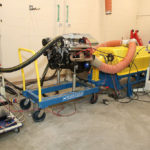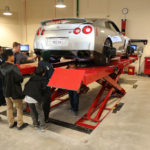Improving the lives of children and family for decades

By James Quinn
With so many children and families in need every day, we are very fortunate to have the Children’s Network of Solano County (CNSC) in Fairfield, a registered 501(c)3 organization that, in my opinion, goes above and beyond their mission statement of “improving the lives of children in Solano County through education, advocacy, coordination of community services and community-based collaboratives” (childnet.org).
Established in 1982 by the Solano County Board of Supervisors, the Children’s Network started as a fundraising arm for the Children’s Network Council (now called the Solano Children’s Alliance), which is a 20-membered body appointed by said board. “It was originally formed because a local Children’s Shelter had closed, causing a big uproar in the community about who is paying attention to what kids need,” Executive Director Ronda Kogler said. Kogler served as CNSC’s director of operations for 22 years until recently starting as executive director on July 1st (after Alan Kerzin retired with six years of service).
CNSC has since branched out and expanded—where they do so much to serve their community—as a nonprofit that stands up for child rights by dedicating their organization to protecting them and making their lives better. Their website highlights just some of what they do: “The Children’s Network promotes programs that support families, secures funding for children’s services and programs, influences policy at the local and state level, helps families access services, and collects and publishes data on the health, safety, and well-being of Solano County children” (childnet.org).
Kogler was able to elaborate on this list when she told me that the organization stays active in a lot of projects that encourages civic engagement. “We’ve run the Parent-Leadership Training Institute (teaching parents how to advocate for their kids),” Kogler said. “We staff Solano Youth Voices, which is a council of youth that have developed a public policy platform.” In other words, the organization values not only keeping the youth involved in their communities but also giving voice to minors as allies in the decision-making, the collaborative process behind the policies that affect them.
Part of what makes CNSC such a strong community staple is not only what it does for it but also how it utilizes networking (living up to its name) to work smarter via collaboration. For instance, in addition to their dedicated staff, volunteers and their Board of Directors, the organization partners with local advocates that comprise: (to only name a few) the Solano Children’s Alliance, who acts as the County’s Child Abuse Prevention Council, and Local Child Care Planning Council. They are also partnered with SparkPoint Solano Progam, Solano Family Resource Center (FRC), Solano Youth Voices, and others—all “to assure there is a strong, united, independent voice for all of our children” (childnet.org).
In order to effectively carry out their mission statement countywide, CNSC takes a systematic approach, where the first step is uncovering the need by asking the right questions, evaluating current processes, identifying gaps and figuring out what areas need the most support (childnet.org). Next, through collaborating and coordinating, Children’s Network forms community networks to address particular needs and how to provide the best services. “That includes direct involvement in coordinating those services and programs, which includes developing funding for programs, training, education and facilities development” (childnet.org). Lastly, to facilitate change and make a greater youth impact, the organization focuses on advocacy. Their website continues, “We make recommendations to local and state leaders and address policy issues that directly affect our community. We inform policymakers on the gaps in services and encourage action to fill those gaps” (childnet.org).
A big community need that CNSC advocates for is helping families—as a nurturing family and home that provides a safe, positive environment go hand-in-hand to a child’s healthy development. “To improve the lives of children, we need to remember that all children are part of families, so really that means we have to pay attention to family needs and family supports,” Kogler said.
One of the main ways CNSC helps families is through childcare, which is not only an urgent, national need but also an expensive one. It is no secret that childcare is usually one of the largest expenses that a family has, yet not all families have the ability to access childcare and the money to afford it (e.g. expensive diapers, food, along with clothes that children quickly grow out of). It may also seem counterintuitive that whereas childcare is so expensive, childcare providers are still poorly paid. CNSC, however, provides programs and services to help with childcare, as well as helping families get access to other basic needs assistance and benefits available to them.
Koger continued, “We need to make sure families have supports in place to help prevent child abuse and ensure they can thrive. This means advocating for kids’ needs both at the local, state, and federal levels, paying attention to and supporting family-friendly legislation.” Some of these supports could even mean helping families who are in urgent need with stressful expenses such as assistance with their rent, utilities, etc.
CNSC collaborates with the government locally (at the county level), which sometimes makes an impact at the state level. “Local changes can have statewide implications. Every voice counts.” Kogler said. For example, the organization recently advocated for a bill to change the eligibility rules for subsidized child care for Solano families. Kogler continued, “Our Local Child Care Planning Council (LPC) went to Jim Frazier, along with other LPC councils, and said that the rules around subsidized child care weren’t working for our families. We advocated for a pilot project [AB-377 Child Care Subsidy Plan that Governor Brown signed in 2017]. That pilot said that we could change some of the rules for our county so that more families can access subsidized childcare. Because we did that work locally, now the state has passed AB-2626 [child care bill passed in 2018], which takes a lot of those provisions and makes them statewide.”
According to their website, another local action that affected the state is when they: “worked successfully with the courts to establish a policy of imposing restitution fines from those convicted of child abuse. The fines are used to support local child abuse prevention work” (childnet.org). This ruling is huge in rendering mandatory restitution to direct victims of child abuse. CNSC clearly makes a significant impact in our community by taking action to make a difference.
CNSC is a great example of people and government working together to establish much-needed public services that the community wants. Community relationships are fundamental to the organization—something that they have carried with them since their founding.
On that note, CNSC staff likes to support monthly public meetings of the Solano Children’s Alliance, which you can attend on the first Wednesday of each month. Their next one is scheduled for August 7th—with the topic of Mental Behavioral Health—at Solano Family and Children’s Services (SFCS): 421 Executive Ct N # A, Fairfield, CA 94534. This meeting would be a great opportunity to learn additional information for free, and Kogler encouraged me and anyone else to attend. See a full schedule of their public meetings on their website’s homepage.
Donate to the nonprofit organization on their website at childnet.org/get-involved, where your contribution can help change the future of a child and their family. Plus, since they are a registered 501(c)3, remember that donations are tax-deductible.
Children’s Network of Solano County is located on 827 Missouri Street, Fairfield. They have a great website, full of information on resources and services such as financial support and volunteering opportunities. Visit them at childnet.org, and be sure to “Like” their Facebook page @TheChildrensNetwork to follow them for convenient updates, event dates, etc. Call Children’s Network of Solano County at (707) 421-7229 or email them at childnet@childnet.org.
For Child Welfare Services, call (707) 784-8791. To report incidents of abuse or neglect, call their 24-hour hotline at 1-800-544-8696.
 James Quinn lives in Benicia and teaches at Elmer Cave Language Academy in Vallejo. A UC Davis alumnus in English, he now studies education as part of Touro University’s Master’s in Education program. Along with teaching, he tutors and writes often. He is working on a novel that takes place in Benicia. See his website at mrquinnj.weebly.com.
James Quinn lives in Benicia and teaches at Elmer Cave Language Academy in Vallejo. A UC Davis alumnus in English, he now studies education as part of Touro University’s Master’s in Education program. Along with teaching, he tutors and writes often. He is working on a novel that takes place in Benicia. See his website at mrquinnj.weebly.com.
Free, weekly, family-friendly entertainment
By Matt Larson
In 2008, a small group of musicians and music lovers came together to put on a show. They found some of the best bands in the Bay Area and had one goal in mind: to provide free family entertainment for the greater Napa community. It was a grand success and soon after they began a partnership with the city of Napa’s Parks and Rec department to give these free and family-friendly concerts at the Veterans Memorial Park in Downtown Napa. They called it Napa City Nights.
This summer, Napa City Nights will be held every Friday night from June 7th through August 23rd. “In the beginning, we didn’t have any money at all,” said Event Director and Co-Founder Chris Chesbrough. “We basically pooled equipment together, contacted a bunch of bands that we knew, volunteered to set up the show, and put on 3 acts every Friday night.”
Before too long, they were able to lock down some sponsorships to start paying the bands and buy better equipment. “And that’s kind of our story every year,” Chris said. “We get supported by the local merchants, we all volunteer, and we formed a 501(c)(3) nonprofit so that everything’s tax deductible for our sponsors.”
“It’s gotten bigger and better every year,” he continued. Now in its 12th season, Napa City Nights attracts an average of 1,000 attendees per Friday night. They’re even planning to start live streaming the event as a bit of an experiment. However, it’s not just the Napa community that’s taken note of the event, as bands throughout the entire Bay Area are hopping in line to perform.
“We had over 250 acts, from all over the place, that contacted us to play,” Chris said. “It was one of our largest turnouts of bands submitting.” There is no submission fee for the bands—which is a tremendous service in and of itself—and every single band that submits has a fair shot to perform.
“We look at every single band that comes through via email and just kind of weed through to see what’s appropriate for our venue,” Chris explained. “We also might reach out to certain bands that we like to see if they’re available for certain dates. “It’s a bit of a process, all done by committee; we wish that we could have everybody play but that’s just not doable. But we do get 36 acts out there doing their thing!”
Providing an amazing experience for three dozen musical acts throughout the Bay Area, who also get paid for the performance, is a tremendous gift for the music, and music-lover, communities alike. Napa City Nights also offers internships for those interested in event production, which is not something they’ve started because of their success, but something they’ve been doing since the beginning.
“From working with the bands to sound and lighting, to merchandise, security, cleanup—we try to teach all aspects of concert production,” Chris explained. They’ve had at least three or four interns join their group of about 15 volunteers every year, a fairly small team considering the undertaking, so an intern would get a very full experience working with Napa City Nights. And the best thing is—anyone can apply.
“It’s usually people who’ve just got a love of music,” Chris told us. “That’s one of the things that I really like about the event; it’s very grassroots. And we teach old-school production.” With a much more analog approach (as opposed to digital, which they have begun to integrate), interns at Napa City Nights get to know the fundamental basics of putting on a live concert.
Open to anyone and everyone, Napa City Nights’ concerts enforce no age restrictions whatsoever. “It’s free to anybody who wants to come and check it out! Which we love … because if they don’t like the music they can always try to get a refund on their ticket,” Chris joked.
You can always just walk around downtown Napa if you’re not a fan of the current act and come back for the headliner, but these performers are carefully selected. In fact, most people do just the opposite of walking away—they show up hours in advance to set up camp in anticipation of this iconic event that remains consistently awesome, week after week, year after year.
Keeping with the family-friendly theme, no alcohol is available for sale at Napa City Nights, but it is allowed! “We don’t serve alcohol, but we do have a permit that allows people to bring it in the park,” Chris said. And there’s no corking fee or anything like that either, sticking to that “free” theme.
As with most events in Napa, if there isn’t wine or alcohol for sale, you can often bet on some eclectic food options, but you won’t find that at Napa City Nights. “We really want to support the local downtown merchants and restaurants,” Chris said. “We’ve got three vendors that do concert food and that’s it—hot dogs, ice cream, and pizza. We get inundated with people who want to set up a table but we just don’t do it.”
Everyone is encouraged to bring a blanket, a picnic, and dancing shoes! “We’ve got a huge dance floor,” Chris beamed. As far as the musical selections, it can vary quite a bit. “From world beat-type music to high energy rock ’n’ roll—soul, funk, some country—we like to mix it up. But you won’t get rap and you won’t get death metal at our show.”
So why should you attend? Simply, “It’s the most fun you could have on a Friday night,” Chris asserted. “It really is a blast, everybody has a great time. And it is truly keeping live music happening! We don’t do backtracks, we don’t do ‘disco’—it’s live music by people who actually learned how to play an instrument.”
But of course, it takes a village, and without the support from their sponsors, local merchants, and especially the volunteers, there’s no way Napa City Nights would have made it these past 12 years. “We can’t do it without our crew,” Chris said. “It’s an amazing group of people, and we work for food! It’s all about the people, our crew, and the artists. It’s been a pleasure to do it all these years.”
Look for Chris performing with his band Road Eleven. Opening night you can catch Purple Haze, one of the season’s few tribute acts. If you’d like to submit your own musical act for the 2020 season you can head to their website at napacitynights.com, or email your press kit to napacitynights@gmail.com. If you’d like to attend, head to the Veterans Memorial Park Amphitheater in Downtown Napa at the corner of Third & Main streets every Friday night this summer between the hours of 6:30-10 p.m. June 7th through August 23rd, 2019.
“Our mission, and our vision, is just to try to keep that family-friendly vibe going,” Chris said. “Everybody’s a part of the show. There’s no ‘us’ and ‘them’, it’s just everybody having a good time.” And, arguably, the best way to tell if it’s a great event or not is to ask how the bands enjoy playing the venue, and Chris has had a pretty consistent response from the performers over the years. “Every band that has played Napa City Nights always wants to come back, because they just love the venue, and they love the vibe.”=
Same goes for their regular attendees who come early every week to pick out their favorite spot to enjoy the show. So head downtown to get an early dinner in time to walk over to the park for some quality, live, entertainment.
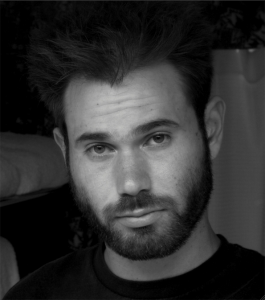
Larson is an actor/comedian/director from Vallejo who lives a double life between the Bay and LA. When he’s not writing for Local Happenings Magazine he could be editing a short film or working on his next rap album—who knows!
Keep up with all things Larson at www.MarsLegstrong.com.”
By Nate Gartrell
The bright red and white lights that display the words “C and H Pure Cane Sugar” to hundreds of thousands of passersby on the Carquinez Bridge each day have become one of the most iconic sites in the Bay Area. They might be powered by modern, energy-saving LEDs, but they give off a feeling of nostalgia, a throwback to an era where red brick factories and warehouses lined the shores of the Carquinez Strait from Crockett to Martinez, when industry, fishing, and transportation by rail and ferry were the driving forces behind the local economy. The California and Hawaiian Sugar Factory was founded in 1906, though parts of the building that have made up its home are even older than that, harkening back to the late 19th century. Nearly everything about the area has changed since then—even the sugar factory’s linkage with Hawaiian cane fields—but through it all, the sugar factory has endured.
When it started, the factory employed around 500 people and produced around 67,000 tons of refined sugar per year. It now employs around 450 and produces about 10 times its 1906 levels—millions of pounds per day—accounting for roughly 14 percent of all the sugar throughout the United States.
“Today C&H produces cane sugar and molasses for a vast US market,” the factory’s website says. “The Crockett refinery processes over 700 thousand tons of cane sugar annually—more than 70 types, grades and package sizes, including packaged consumer sugars as well as packaged, liquid, and bulk granulated, industrial-use cane sugars.”
The history of the sugar factory goes back to the Gold Rush era when a man named Abraham Starr came to the Bay Area in search of fortune, at the young age of 18. While he didn’t strike it rich with a gold pan, Starr started a flour mill in Vallejo. Then, in the second half of the 19th century, he crossed the Carquinez Strait and opening a mill called Wheatport in Crockett, where C&H now stands. Before the mill could go into heavy production, the bank scare of 1893 forced Starr to sell to a businessman named G.W. McNear, who envisioned a beet sugar factory on the site. He converted the mill into just that—but as anyone at C&H will tell you—beet sugar is considered inferior to pure cane sugar. Soon, a Hawaiian ownership group took over the site and began a tradition that would hold for the next 111 years: Shipping raw sugar canes from Hawaii to Crockett, where the factory would refine it into the granulated sugar we all know and love. Crockett’s location had it all—access to the Pacific Ocean, railroad, and the highway, as well as a pre-made sugar refining plant. As another big plus to Crockett, it gave access to fresh water via the Delta (i.e., fresh water is a necessary element in the process of refining sugar), and for decades, sugar would be shipped down the Delta via the Carquinez Strait by C&H barges.
The factory has been working basically around the clock ever since 1906. After celebrating its 100th anniversary in 2006, it was bought by its current owners, the Florida-based American Sugar Refining, Inc., which runs similar factories and cane fields throughout the country.
“We ship anywhere from 90 to 100 packaged trucks every day, over 25,000 a year,” Jake Peterson, a warehouse manager, said in a video series that C&H put out in 2017. “The Crockett facility is a great Bay Area location. We actually got train tracks that run right through the facility, so we have the ability to load packaged cars and bulk rail cars if the demand is out there.”
Two years ago marked the end of an era for the sugar factory, when the last of its Hawaiian sugar plants, in Maui, shut down. In an event that would garner media attention around Northern California, the factory commemorated the arrival of the cargo ship Moku Pahu when it carried what would be the final Hawaiian shipment—30,000 tons in total—into the Crockett harbor in January 2017. That’s a typical shipment, and factory workers say the factory receives 25-30 of those annually.
“Normally in the sugar industry, sugar is stored in raw sugar sheds. But unique to Crockett, we have nine raw sugar silos. Each silo can store around 12,000 tons of raw sugar, which is 24 million pounds,” Hitesh Sharma, an engineering manager, said in one of the factory’s 2017 videos. “So with nine silos we have the capacity to store 110,000 tons of raw sugar at a time.”
The end of the Hawaiian connection was part of a nationwide decline of domestic sugar production. In keeping with its nostalgic spirit, C&H maintained its name and logo, but now its cane comes from foreign production sites in Mexico, Brazil, Australia, or Vietnam, to name a few.
“While Hawaii no longer produces raw sugar, C&H Sugar is still made with pure cane sugar, and we are very proud of our Hawaiian heritage, which is why we display the hibiscus flower on our logo,” a C&H spokesperson told Local Happenings magazine. Because the sugar factory has become a mainstay in Crockett for the bulk of the town’s history (and even though many of its employees live out of town), Crockett has become known by the nickname “Sugartown.” And every year for the past 11 years, the town’s Chamber of Commerce has commemorated the special relationship between C&H and Crockett with the Sugartown Festival, an outdoor music and street fair. It is held on the third Sunday of July, which this year falls on July 21, from 11 a.m. to 6 p.m.
“It is a great outdoor music festival and street fair,” the festival’s website says. “It is family friendly, has great arts and crafts, food, beer, wine, and live entertainment. Stroll through a shady street, enjoying the food and wine, shopping, the great arts and craft vendors while enjoying wonderful music, with two stages to choose from.”
For this year, Lagunitas Brewing Co. will host a beer garden for the festival, and the organizers say margarita fans will also be pleased. The festival will feature nine local bands, each bringing a unique flavor to the table. In chronological order, from morning to afternoon, there will be: The Rhythm Doctors (blues band), Mama Foxxy (bluegrass/folk group), the Whiskey Gipsy Rebels, the Concord “rockabilly” group Mitch Polzak, the Royal Deuces (reggae band), Planting Seeds (also based in Concord), Van Goat (Oakland-based, punk, swing, ragtime, and southern jazz band), Crockett’s own jazz orchestra called Steve Snyder’s Big Band, Louisiana BlackCat Zydeco band, the Billy Martini Show (playing ‘70s and ‘80s dance music), and the VibraSÓN Latin Band (bringing “some of the greatest musical talent the Bay Area has to offer,” its website says).
The Sugartown Festival is free to enter and will be held rain or shine! For additional information on the C&H Factory, including recipes specially made for C&H sugar, visit chsugar.com or facebook.com/CandHSugar. View a series of short videos produced by the factory, giving the public a rare look inside, at vimeo.com/chsugarcrockett.
For additional information on the Sugartown Festival, including a list of vendors and musical acts with biographies, visit sugartownfestival.com. You can also get information, or sign up to volunteer at the festival, by emailing crockettchamber@aol.com or by visiting the Crockett Chamber’s website: crockettcalifornia.com. The chamber is located at 1214 A Pomona Street in Crockett, and its mailing address is P.O. Box 191 in Crockett, CA, 94525.
-

-

-

-
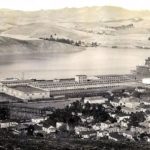
-
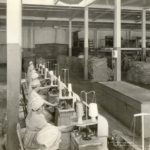
-
Sewing Sugar Bags
-
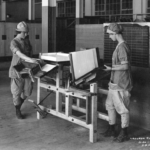
-
Sugar Cube Station
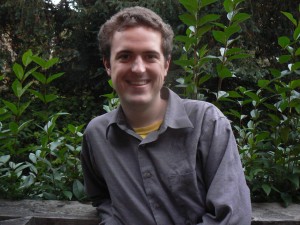
Nate Gartrell grew up in Benicia, studied journalism in college, and has written for a handful of media outlets since age 15. He aspires to visit all 30 Major League Baseball stadiums and to hit the trifecta at the horse track.
The field of Automotive Technology provides for a niche career
By James Quinn
Solano Community College (SCC) has further expanded into Vallejo with its Auto Technology Facility at 1695 Ascot Parkway (at the corner of Ascot and Turner parkways). This beautiful campus opened up just last year, fall semester of 2017, with a grand opening ceremony. More importantly, this Solano Community College Auto Technology Facility paints an exciting picture for the future of Vallejo and our local community, as we move further into the technological age.
With their new facility, SCC promotes the trades in a college setting by giving students the opportunity to major in the field of automotive technology (the study of practical automotive knowledge, hands-on experience, with that of technology). One of the Auto Technology Department’s main goals is to prepare students for working in the field, both during and after the Automotive Technology Program. As their website describes, “This program is designed to prepare graduates for entry-level employment in the automotive industry as apprentice technicians, parts specialists, service consultants, or specialists in one of the many areas in the automotive service and repair industry.” The department is already rated very high online, namely due to their strong faculty of professors who ready students for a respectable career, both during and after the program.
Helping them get there, the program has highly experienced instructors in the automotive technology field: Professor Paul Hidy, Professor Rick Marshall, and Professor Andrew McGee. The instructors have more than just office hours, as they give valuable one-on-one, hands-on training in the campus’ automotive bay shops and classrooms while incorporating technology that goes from basic to cutting-edge. They foster students’ understanding of how things work, organizational skills, oral and written communication skills, problem-solving, innovation, teamwork, and technology skills (to only name a few). “Students who complete the program will be technically proficient in entry-level skills as defined by the National Automotive Technicians Education Foundation,” their website states.
At the time of this article’s writing, the program has a big class close to graduating, according to Professor McGee—and from one educator to another, I could tell he, just as the other professors, is clearly passionate about teaching students and their success in working in the field. “We have several students who are currently working in the automotive field as technicians, service advisors, parts people, etc … at various locations, whether it be at dealerships or independent shops around Solano County and beyond,” Professor McGee said. “Right now, it’s toward the end of our spring semester, so we have several students who are graduating with their Associate’s Degree and/or certificates.”
By attending classes through SCC’s Automotive Technician Program, people can earn various degrees and certificates to get out into the field in only about two years, depending on the specific requirements—which is a lot faster than a four-year college, as well as other programs that often turn into five years or more—and their graduation rate keeps going up. “We have a significant number of students who are completing our program. That number has been increasing since we started,” Professor McGee said.
Some of the degrees and certificates that the Automotive Technology Department offers include, Associate in Science Degree, Certificate of Achievement in Automotive Automatic Transmissions & Transaxles, Certificate of Achievement in Automotive Electrical & Body Systems, and Certificate of Achievement in Automotive Maintenance & Light Repair. They also offer a smog check training for the California Smog Check Inspector licensing exam. Be sure to visit their online catalog for the specific requirements by degree or certificate, conveniently accessed here: solano.edu/catalog.
Fortunately, greater amounts of people in our community recognize this trade of automotive technology as a career choice. While trades are at a national low, efforts by publication, word of mouth, and SCC’s involvement in the community have made a positive difference. “The public is more and more aware that our program exists,” Professor McGee said. “We’ve been taking extensive measures to go out to the high schools and do outreach, and also in our community to help let the public know, ‘Hey, you can get an education that leads to a job and great career in the automotive industry.’” It is indeed a lucrative career choice, as a quick Google search will show for an automotive technician (that position is just one example, depending on the degree and/or certificates earned from the program).
Moreover, we are in the age of educating people to use technology for jobs that do not even exist yet by giving them pertinent skills that can transfer from related fields. Because cars can do so much more than ever before with technology—as seen with electric cars, Internet-connected vehicles, and autonomous cars—and because consumers are more tech-focused, it is especially important to know why pursuing automotive technology is wise in the 21st century. Autonomous cars, for instance, while a trending topic for multiple reasons, they are now far less of an idea than a reality. More people accept that they are here to stay, expedited with technological advancements that ensure greater safety.
The Solano Community College Auto Technology Facility stays up to date with the latest technology to teach students this trade that puts them in a comfortable position. Because most people outside of the automotive industry will not know how to work on cars (vehicles are bound for repairs throughout their driving life); those who do, clearly have the advantage. However, those with automotive technology training and certification from the program have an even better niche since many will not know how to work on cars with particular technology, especially if it just came out.
When weighing out choices for significant life-decisions, SCC’s automotive program is a great investment. Not only is SCC conveniently located in our community—which will not require much of a commute for most—but they also offer more affordable college units (especially as a California resident) than the vast majority of four-year colleges while putting you directly into the field in less amount of time. Another money saver is that since the program teaches how to work on cars of the future, students can independently do more while taking pride in a field that will not require them to constantly hire expensive mechanics down the road, no pun intended. This industry will clearly not die out anytime soon: a career in automotive technology means strong job security, as it will remain at the forefront of society, just as cars and technology are in their own right.
For additional information on the Solano Community College Auto Technology Facility, their Automotive Technology Department, and program visit solano.edu/business/1718/AutoTechflyer2017.pdf; for enrollment information, go to solano.edu/future_students or call Admissions & Records at (707) 864-7171. The new state-of-the-art campus is located on 1695 Ascot Pkwy, Vallejo.

James Quinn lives in Benicia and teaches at Elmer Cave Language Academy in Vallejo. A UC Davis alumnus in English, he now studies education as part of Touro University’s Master’s in Education program. Along with teaching, he tutors and writes often. He is working on a novel that takes place in Benicia. See his website at mrquinnj.weebly.com.

Looking Back and Looking Forward
By: Nate Gartrell
In 1957, the citizens of Vacaville decided to come together in a weeklong celebration of the area’s ties to the American West, and what better place to do that than a city that literally translates to “Cow Town”? Sixty-two years later, the tradition continues with a multi-day party that shows off Vacaville’s fiesta spirit.
Known as Fiesta Days, this four-day celebration of the city’s past, present, and future is part of a lineage of large celebrations and parties in Vacaville that goes back more than 100 years. This year’s festival will be from May 23rd to the 26th, at its longtime home of Andrews Park in Vacaville.
The Fiesta Days celebration is run by a nonprofit, aptly called Vacaville Fiesta Days, a donor- and volunteer-run organization that puts together not just Fiesta Days, but also several other annual celebrations throughout the city.
“It’s not put on by very many,” said Karen Juliffs, the general chair of Vacaville Fiesta Days. “I think our whole staff is about 18 people, and we put on a 50,000-person event each year. It’s just our small board of directors and volunteers.”
Juliffs involved herself with the festival for 25 years, nearly half its history, and helped run the nonprofit for the past decade. She said many of the fiesta’s events and competitions—like the locally-famous Diaper Derby—date back to the original celebration in 1957. It is not uncommon to see families with multiple generations coming to Fiesta Days each year for as long as their families have been in town. “It’s a longstanding event,” Karen said. “There are a lot of special things about Fiesta Days.”
The history of Fiesta Days started long before the first festival actually took place: in April 1916, Vacaville put on an event called Pageant Day to celebrate the city’s history, as an early indication that Vacaville wanted its own fair, such as ones that are held in nearby Dixon each year. Fiesta Days’ website describes the very first pageant day:
Main Street was draped with flags, and 1,500 lined the street to watch the parade of 300 pageant participants pass from High School Hill down to Main…Chief Solano led the parade followed by American Indians native to the Vacaville area. Next followed the Spanish with descendants of the city’s founding families, the Vaca’s and the Pena’s. A chorus sang ‘La Paloma.’ Next came the Franciscan fathers, the gold rush miners, cowboys, farmers, the Japanese and Chinese, Gypsies and singing schoolchildren. Bringing up the rear were decorated automobiles—still a new sight in 1916.
Despite the success, Pageant Day turned out to be a one-time thing, but folks yearned for a festival of their own. In 1957, they created Fiesta Days as an echo to Pageant Day. The very first Fiesta Day leaned heavily on western traditions; there was a rodeo, two days of square dancing, a queen pageant, a large parade, and a beard growing contest. The beard growing contest was a bit more serious than you might expect—those who failed to grow a beard for the festival were thrown in a “jail,” specially made for the festival (all in good fun, of course). Nowadays, whereas 1,500 people attended Pageant Day, the Fiesta Days celebration attracts tens of thousands of folks each year, from Vacaville and the surrounding cities. As its website says, “Events changed and committee members disagreed, battled, quit and rejoined, but somehow, Fiesta Days has endured for 50 years.”
For this year, instead of two days of square dancing, the event will have a beer garden with plenty of musical grounds with local tribute bands: Jackson Stone, Hey Jude, Rhythm Method 4, the Time Bandits, and Skinny Lynyrd.
The festival will also have a carnival with more than 25 rides, as well as a Family Fun Zone for young children. “The kids’ zone is totally revamped,” Karen said. “This year, we’re coordinating with the STEM (science, technology, engineering, and mathematics) program.”
They will also host a longstanding annual competition, designed to make you hot and sweaty. I’m talking, of course, about the jalapeño and onion-eating contest. It takes a stomach of steel to compete—and you have to be at least 18 years old—but sign up if you think you’ve got what it takes, and compete against locals who’ve been at it year after year!
“People that come here from out of town end up spending time here and, living here, realize there’s something different,” Scott McKenzie, one of three grand marshals for this year’s Fiesta Days parade, said in a news release. “It’s really community-centered and oriented; it’s a pretty big town, but it still has a small-town feel.”
Then, there’s probably the most adorable event of Fiesta Days, the Diaper Derby, which is a race, of sorts. It features dozens of babies who crawl their way across soft mats as the outstretched hands of their parents lure them to the finish line. Prizes include trophies, bibs, baby T-shirts, and ribbons. Many Vacaville natives have participated over the years, even if they can’t remember doing it. According to the local newspaper, the tradition has been around for 62 years and counting. “I have seen families with five generations of members who have all been in the Diaper Derby,” Karen said.
On Saturday (again in the tradition of the original Vacaville Pageant Day), a parade will celebrate the city’s history and heritage, which will go down Merchant Street. This year’s grand marshal announced at a February cocktail party and crab feed, all are from one family: Scott, David and Ian McKenzie, the owners of Pacific Ace Hardware. “It’s an honor,” Scott said of the designation, in a news release put out by Fiesta Days. “It’s a great community.”
The Pacific Ace Hardware store has a common thread with the fiesta itself, in that both have been around since 1957. The McKenzie family has attended the festival for the long haul, and it is far from the first time its members have participated in the parade. “I’ve taken my children to Fiesta Days’ parades and events since day one,” David said in a news release. “Even when we’ve lived in Dixon, we’ve never missed a parade.”
Fiesta Days has a long list of other fun events: a golf tournament, a car show, and, before the festival starts, there will also be a kickoff barbecue at the park on May 20th. There will be a singing competition in the vein of American Idol that will be on Sunday at 2 p.m., featuring cash prizes for the winners of three age divisions: 5-12, 13-18, and 19+. $20 is the entry fee for all participants.
In order to put on celebrations year-round, Vacaville Fiesta Days relies on its own fundraising efforts, as well as the crucial work from volunteers around the city. While the work behind the festival is challenging, volunteers are a big part of what makes it all possible each year. “[Volunteer] opportunities include gate security, beer pouring, and clean-up at the Beer Garden from Thursday through Monday of Fiesta Days week…Volunteer shifts are 4-hour shifts and sign-ups are open on a first-come/first-serve basis,” the nonprofit’s website says. If you’re interested in volunteering, visit fiestadays.org/contact/how-to-volunteer.
Fiesta Days begin on Thursday, May 23rd and run through Sunday, May 26th. For additional information on events, to sign up as a vendor, or participate in a contest, visit fiestadays.org. Email them at fiestadays@yahoo.com or call the festival’s organizers at (707) 448-4613.

Nate Gartrell grew up in Benicia, studied journalism in college, and has written for a handful of media outlets since age 15. He aspires to visit all 30 Major League Baseball stadiums and to hit the trifecta at the horse track.

Napa Valley Vintners presents Auction Napa Valley May 30th – June 2nd
By Matt Larson
The 39th Annual Auction Napa Valley is fast approaching! Four days of vintner-hosted parties await at the world’s only single-case auction of 100 or more lots that include tasting wine, directly with the winemakers, straight from the barrel.
An annual sell out, tickets are now on sale, so get them as soon as possible! Especially now that special guests Katy Perry and Ayesha Curry have been announced, this event is the real deal. If it’s already sold out by the time you read this, start planning for next year, as it gets bigger and better each and every time.
You’ll also find an e-auction, open to wine lovers and bidders anywhere in the world in case you like to party from afar. And to keep in tradition, the grand Live Auction Celebration will again be held on the grounds of the same place where it started, and it has always been at Meadowood Napa Valley’s luxurious resort.
Produced by Napa Valley Vintners (NVV), proceeds from Auction Napa Valley support a wide variety of nonprofits and strategic initiatives that focus on bettering community health and children’s education. To date, they have invested $185 million in Napa County’s nonprofit organizations since their inception in 1981.
From American Canyon to Calistoga, impacts have been made in communities throughout the entire county. Some of those organizations that have benefitted from this event include NapaLearns, helping school district staff adopt innovations necessary for the future of their students; Aim High, making sure kids stay focused and motivated during summer break and easing their transition into adolescence; ParentsCAN, providing free services for families raising a child with special needs—NVV via Auction Napa Valley has been a real playmaker for nonprofits in Napa County for one year shy of four decades, so this event is a great way to show your support.
Now that you know Auction Napa Valley is a benefit for not just one, but dozens of phenomenal local causes dedicated to the greater good … what’s to expect?
“The spectacular, natural beauty of Napa Valley, the warm hospitality of our vintners, untold opportunities to taste Napa Valley wines and food from many of Northern California’s most renowned chefs…” Communications Manager Cate Conniff explained. “Our main objective is to provide an extraordinary experience for our guests and to do as much good for our community as possible.”
Everyone that attends has a different take on what their “favorite” aspect of Auction Napa Valley would be, as there is so much to see and do over the course of the four-day fête. “The vibe is pretty electric, and it’s great to meet people who come to our small valley from all over the world,” Conniff added.
Popular facets include bidding on special wines during Friday’s Barrel Auction, spending one-on-one time with vintners and winemakers as they talk about their wines that you’d be enjoying right along with them, noshing down with the chefs that made said noshes, attending exquisitely conceived dinner parties for very small groups, kickin’ back with Katy Perry and Ayesha Curry (from a distance, most likely)—the list goes on and on when you consider the perks of attending the auction to end all auctions that is Auction Napa Valley.
So while you won’t necessarily be able to cheers a glass of vino with Katy Perry and discuss the ups and downs of the music business over a peaceful meal at Meadowood, she will be launching the spirited bidding at Saturday’s Live Auction Celebration accompanied by a presentation of some of her biggest hits.
The main event is indeed the Live Auction Celebration, held under the big tent at Meadowood Napa Valley where you can bid on the region’s finest wines, as well as some rare adventures and treasures that you’d be hard-pressed to find anywhere else.
Following the main event, guests will meander over to the towering conifer-shaded lawn at Meadowood to find celebrity cook and author Ayesha Curry, along with chefs hailing from the award-winning restaurant group of the Michael Mina family. Here, they will be cooking up some savory dishes over open flames that are sure to surprise and delight.
Napa Valley Vintners (NVV) is sponsoring the event, which is a nonprofit trade association that has been “cultivating excellence since 1944.” It consists of 550 members who produce some of the highest-quality, most-consistent wines in the Napa Valley.
This year marks NVV’s 75th anniversary. To commemorate such a milestone, 30 past board of director chairs will be coming together to serve as the honorary co-chairs of Auction Napa Valley. Louis M. Martini is one of the seven founding members of NVV, so for the big 7-5 the Friday Barrel Auction—the first major event of Auction Napa Valley—will be held at the newly restored Louis M. Martini Winery, leading many to refer to this night as somewhat of a homecoming. Positivity will be flowing through all parts of this event, especially since it’s all for such great causes, which is a much longer story than we mentioned above…
When the new school year began last fall, NVV awarded $2.5 million to children’s education in Napa County. They also donated an additional $4 million in capital expenditures to help build two new Boys & Girls Clubs facilities on each end of the county (one being in American Canyon and the other in Calistoga, both having opened in 2018).
OLE Health, the largest recipient of NVV funding, is one of Napa County’s only nonprofit health clinics. OLE practices a new model of healthcare where each patient works with a dedicated team of medical professionals to get the range of services they need, when and where they need them. One in five Napa County residents utilize it.
Supporting such a range of local nonprofits all at once is made possible only by the Napa Valley Vintners’ Auction Napa Valley. The event is to be held from May 30th through June 2nd. Ticket package options and plenty of additional information are available at auctionnapavalley.org. Prices can range from as low as $150 per person to attend the Saturday after party, to as high as $20,000 per couple for the full VIP experience.
There is indeed something for everyone at Auction Napa Valley; however, again, they sell out every year, so head online now to make sure you don’t miss out. You can also call (707) 963-3388 or email reception3@napavintners.com. Happy bidding! And tasting, and/or spitting if you’re driving.

Larson is an actor/comedian/director from Vallejo who lives a double life between the Bay and LA. When he’s not writing for Local Happenings Magazine he could be editing a short film or working on his next rap album—who knows!
Keep up with all things Larson at www.MarsLegstrong.com.”

 James Quinn lives in Benicia and teaches at Elmer Cave Language Academy in Vallejo. A UC Davis alumnus in English, he now studies education as part of Touro University’s Master’s in Education program. Along with teaching, he tutors and writes often. He is working on a novel that takes place in Benicia. See his website at mrquinnj.weebly.com.
James Quinn lives in Benicia and teaches at Elmer Cave Language Academy in Vallejo. A UC Davis alumnus in English, he now studies education as part of Touro University’s Master’s in Education program. Along with teaching, he tutors and writes often. He is working on a novel that takes place in Benicia. See his website at mrquinnj.weebly.com.


















